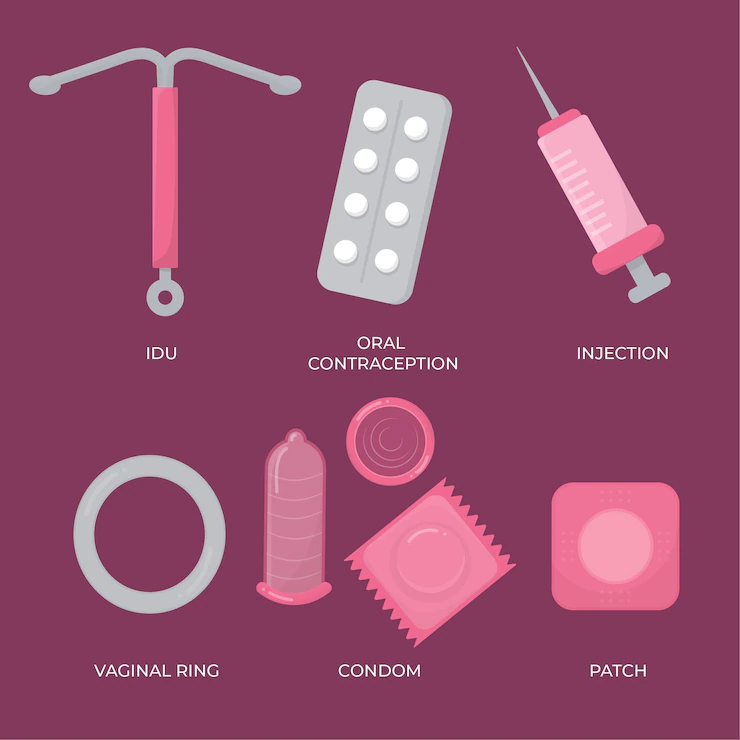When it comes to family planning and reproductive health, there are numerous birth control methods available to individuals seeking to prevent unintended pregnancies. From hormonal methods to barrier methods and long-acting reversible contraception, the range of options ensures that people can find a method that suits their lifestyle, preferences, and unique needs. In this article, we will explore some of the most commonly used birth control methods and provide an overview of how they work.
- Hormonal Methods: Hormonal birth control methods work by using hormones, typically estrogen and progestin, to prevent ovulation or create an inhospitable environment for fertilization. These methods include:
- Combination Pills: These oral contraceptives contain both estrogen and progestin hormones. They are taken daily to suppress ovulation.
- Progestin-Only Pills: Also known as the mini-pill, these pills contain only progestin and are suitable for individuals who cannot take estrogen.
- Contraceptive Patch: A small patch applied to the skin that releases hormones into the bloodstream to prevent pregnancy.
- Contraceptive Ring: A flexible ring inserted into the vagina that releases hormones to prevent ovulation.
- Barrier Methods: Barrier methods create a physical barrier between sperm and the cervix, preventing sperm from reaching an egg. These methods include:
- Male Condoms: Thin sheaths worn over the penis that collect semen and prevent it from entering the vagina.
- Female Condoms: A pouch inserted into the vagina that provides both internal and external protection.
- Diaphragms and Cervical Caps: Dome-shaped devices inserted into the vagina to cover the cervix and prevent sperm from entering.
- Long-Acting Reversible Contraception (LARC): LARC methods are highly effective and require minimal maintenance once inserted. These methods include:
- Intrauterine Devices (IUDs): Small, T-shaped devices inserted into the uterus. They can be hormonal or non-hormonal and provide protection for several years.
- Implants: Small rods inserted under the skin that release hormones to prevent pregnancy. They provide protection for several years.
- Emergency Contraception: Emergency contraception, also known as the “morning-after pill,” is used to prevent pregnancy after unprotected intercourse or contraceptive failure. It is most effective when taken as soon as possible but can be taken up to 72 hours or even up to 120 hours, depending on the type.
- Sterilization: Sterilization is a permanent form of birth control and is suitable for individuals who have completed their desired family size. It includes:
- Tubal Ligation: A surgical procedure that blocks or seals the fallopian tubes to prevent eggs from reaching the uterus.
- Vasectomy: A surgical procedure that involves cutting or blocking the vas deferens, preventing sperm from mixing with semen.
- Fertility Awareness-Based Methods: Fertility awareness-based methods involve tracking menstrual cycles and identifying fertile days to either avoid intercourse or use a barrier method during fertile periods. These methods include tracking basal body temperature, cervical mucus changes, and menstrual cycle patterns.
It is essential to note that no birth control method is 100% effective, and each method has its own benefits and considerations. Choosing the most suitable method depends on individual preferences, health considerations, and lifestyle factors. It is recommended to consult with a healthcare professional to discuss options, understand the effectiveness rates, and determine the most appropriate method based on individual circumstances.
Remember, birth control methods primarily aim to prevent unintended pregnancies and do not protect against sexually transmitted infections (STIs). Using condoms in combination with other birth control methods provides dual protection against both pregnancy and STIs.
Disclaimer: This article is for informational purposes only and is not intended to replace professional medical advice. Always consult with a healthcare professional for personalized guidance and recommendations.










